X-ray and Radio Observations of the Radio Relic Galaxy Clusters 1RXS J0603.3+4214 and RXC J1053.7+5453
Abstract
1. Introduction
2. The 1RXS J0603.3+4214 Cluster with the “Toothbrush” Relic
3. The RXC J1053.7+5453 Cluster
4. Conclusions
Funding
Conflicts of Interest
References
- Feretti, L.; Giovannini, G.; Govoni, F.; Murgia, M. Clusters of galaxies: Observational properties of the diffuse radio emission. Astron. Astrophys. Rev. 2012, 20, 54. [Google Scholar] [CrossRef]
- Brunetti, G.; Jones, T.W. Cosmic Rays in Galaxy Clusters and Their Nonthermal Emission. Int. J. Mod. Phys. D 2014, 23, 2330007. [Google Scholar] [CrossRef]
- Akahori, T.; Nakanishi, H.; Sofue, Y.; Fujita, Y.; Ichiki, K.; Ideguchi, S.; Kameya, O.; Kudoh, T.; Kudoh, Y.; Machida, M.; et al. Cosmic magnetism in centimeter- and meter-wavelength radio astronomy. Publ. Astron. Soc. Jpn. 2018, 70, R2. [Google Scholar] [CrossRef]
- Akamatsu, H.; Kawahara, H. Systematic X-Ray Analysis of Radio Relic Clusters with Suzaku. Publ. Astron. Soc. Jpn. 2013, 65, 16. [Google Scholar] [CrossRef]
- Hong, S.E.; Kang, H.; Ryu, D. Radio and X-Ray Shocks in Clusters of Galaxies. Astrophys. J. 2015, 812, 49. [Google Scholar] [CrossRef]
- Itahana, M.; Takizawa, M.; Akamatsu, H.; Ohashi, T.; Ishisaki, Y.; Kawahara, H.; van Weeren, R.J. Suzaku observations of the galaxy cluster 1RXS J0603.3+4214: Implications of particle acceleration processes in the “Toothbrush” radio relic. Publ. Astron. Soc. Jpn. 2015, 67, 113. [Google Scholar] [CrossRef]
- Itahana, M.; Takizawa, M.; Akamatsu, H.; van Weeren, R.J.; Kawahara, H.; Fukazawa, Y.; Kaastra, J.S.; Nakazawa, K.; Ohashi, T.; Ota, N.; et al. Suzaku and Chandra observations of the galaxy cluster RXC J1053.7+5453 with a radio relic. Publ. Astron. Soc. Jpn. 2017, 69, 88. [Google Scholar] [CrossRef]
- Van Weeren, R.; Röttgering, H.J.A.; Intema, H.T.; Rudnick, L.; Brüggen, M.; Hoeft, M.; Oonk, J.B.R. The “toothbrush-relic”: Evidence for a coherent linear 2-Mpc scale shock wave in a massive merging galaxy cluster? Astron. Astrophys. 2012, 546, A124. [Google Scholar] [CrossRef]
- Van Weeren, R.; Brunetti, G.; Brüggen, M.; Andrade-Santos, F.; Ogrean, G.A.; Williams, W.L.; Röttgering, H.J.A.; Dawson, W.A.; Forman, W.R.; De Gasperin, F.; et al. LOFAR, VLA, and Chandra Observations of the Toothbrush Galaxy Cluster. Astrophys. J. 2016, 818, 204. [Google Scholar] [CrossRef]
- Rajpurohit, K.; Hoeft, M.; Van Weeren, R.J.; Rudnick, L.; Röttgering, H.J.A.; Forman, W.R.; Brüggen, M.; Croston, J.H.; Andrade-Santos, F.; Dawson, W.A.; et al. Deep VLA Observations of the Cluster 1RXS J0603.3+4214 in the Frequency Range of 1–2 GHz. Astrophys. J. 2018, 852, 65. [Google Scholar] [CrossRef]
- Ogrean, G.A.; Brüggen, M.; van Weeren, R.J.; Röttgering, H.; Croston, J.H.; Hoeft, M. Challenges to our understanding of radio relics: X-ray observations of the Toothbrush cluster. Mon. Not. R. Astron. Soc. 2012, 433, 812–824. [Google Scholar] [CrossRef]
- Van Weeren, R.; Brüggen, M.; Röttgering, H.J.A.; Hoeft, M.; Nuza, S.E.; Intema, H.T. Radio continuum observations of new radio halos and relics from the NVSS and WENSS surveys. Relic orientations, cluster X-ray luminosity, and redshift distributions. Astron. Astrophys. 2011, 533, A35. [Google Scholar] [CrossRef]
- Aguerri, J.A.L.; Sánchez-Janssen, R.; Muñoz-Tuñón, C. A study of catalogued nearby galaxy clusters in the SDSS-DR4. I. Cluster global properties. Astron. Astrophys. 2007, 471, 17–29. [Google Scholar] [CrossRef]
- Ebeling, H.; Edge, A.C.; Böhringer, H.; Allen, S.W.; Crawford, C.S.; Fabian, A.C.; Voges, W.; Huchra, J.P. The ROSAT Brightest Cluster Sample—I. The compilation of the sample and the cluster log N-log S distribution. Mon. Not. R. Astron. Soc. 1998, 301, 881–914. [Google Scholar] [CrossRef]
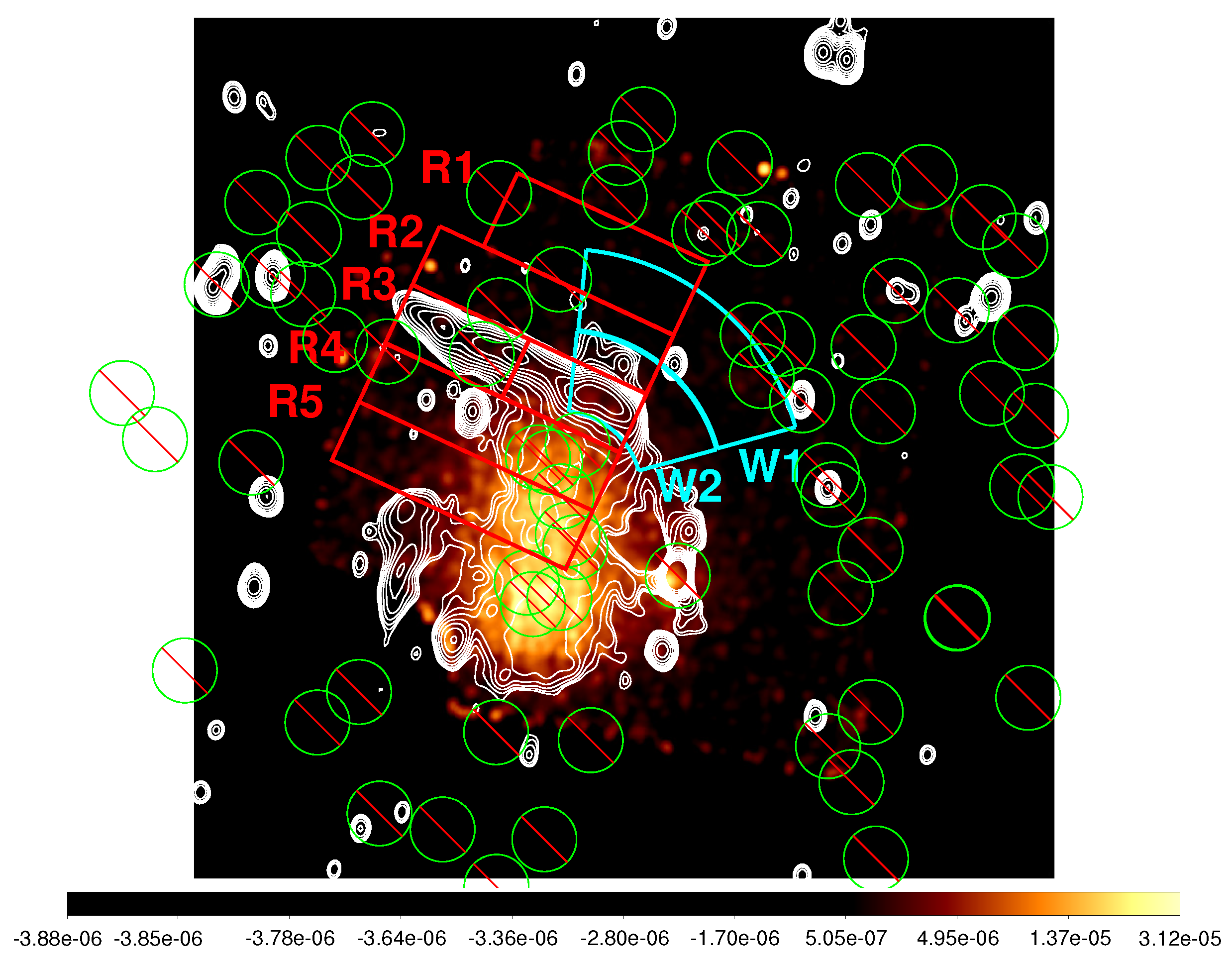
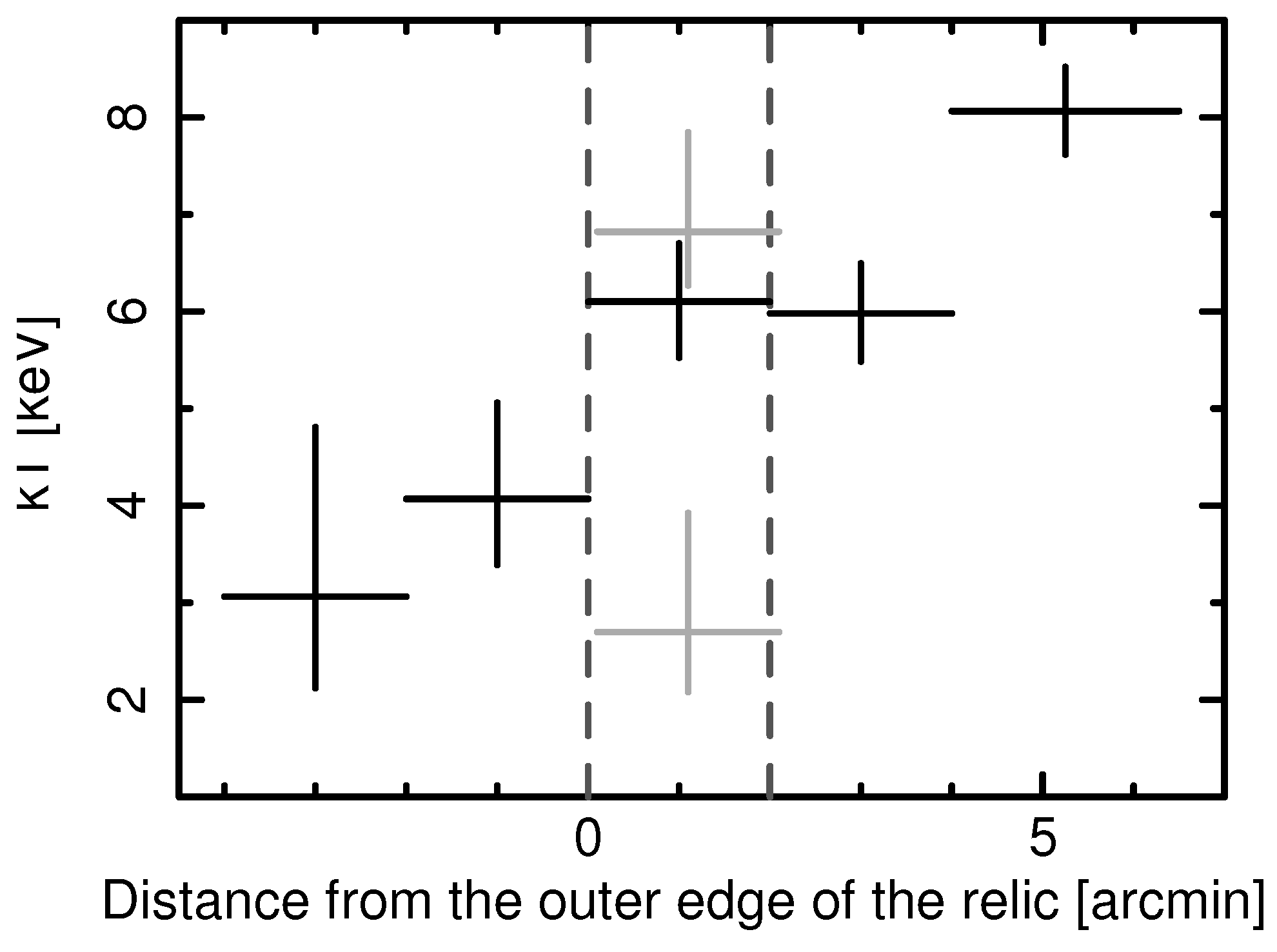
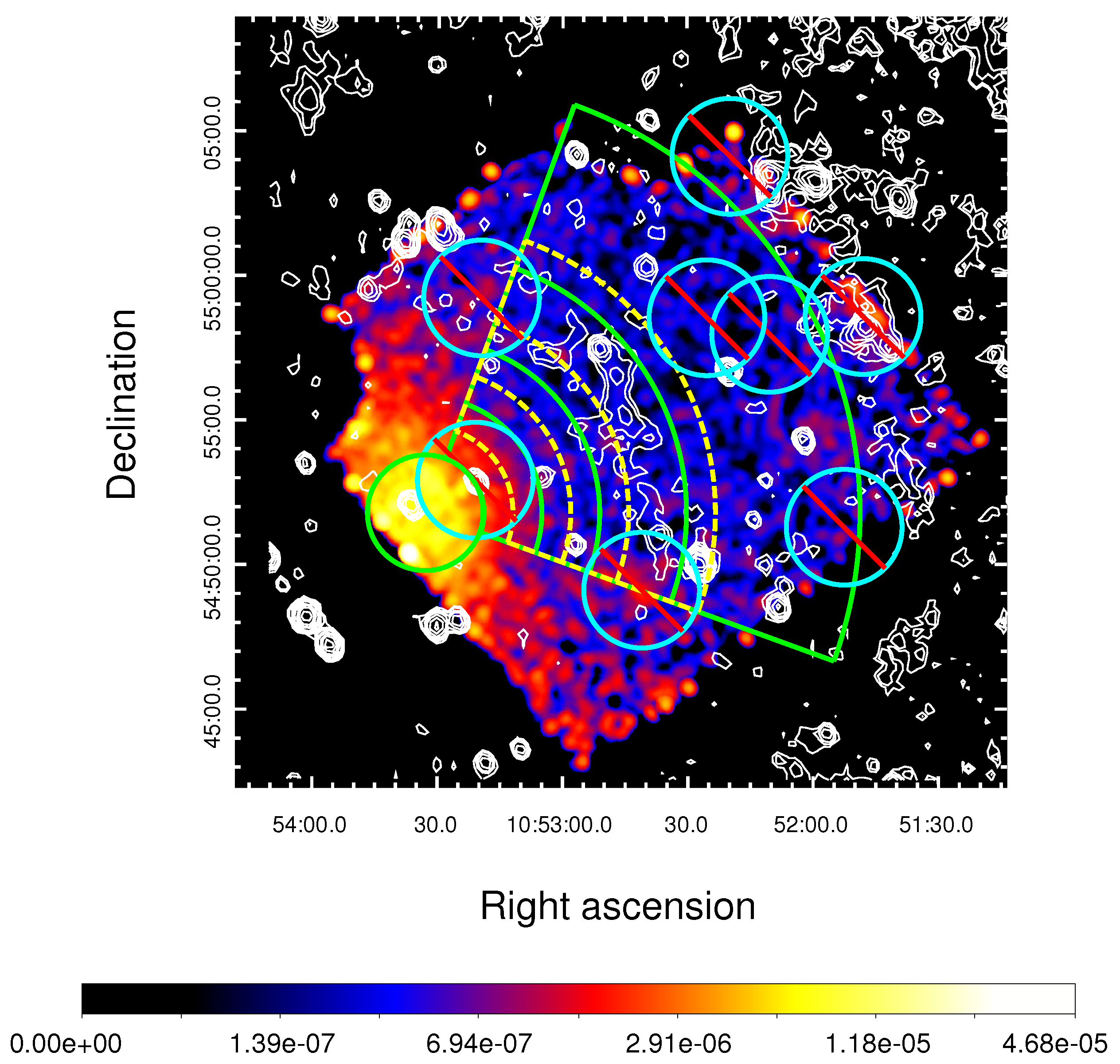
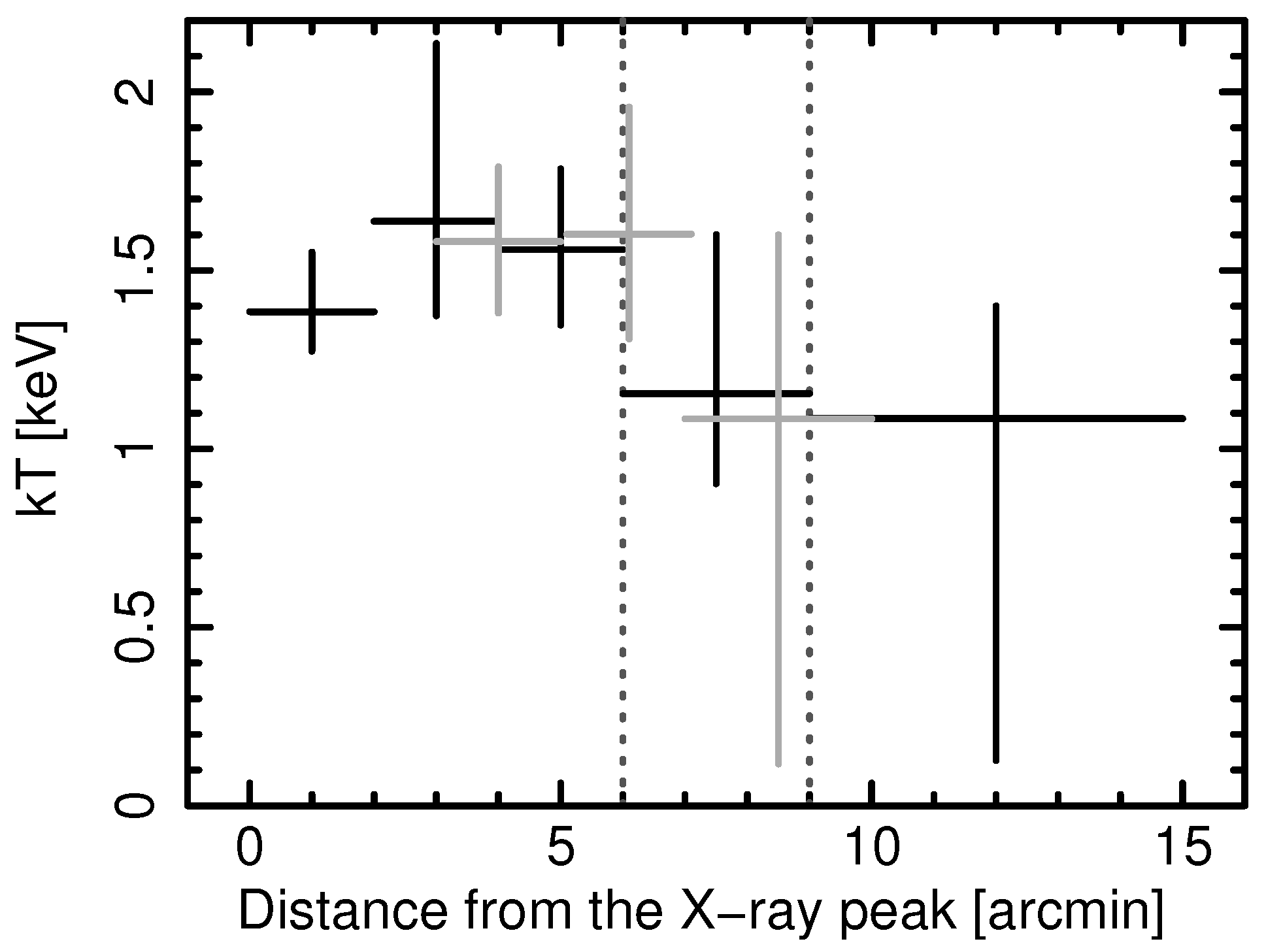
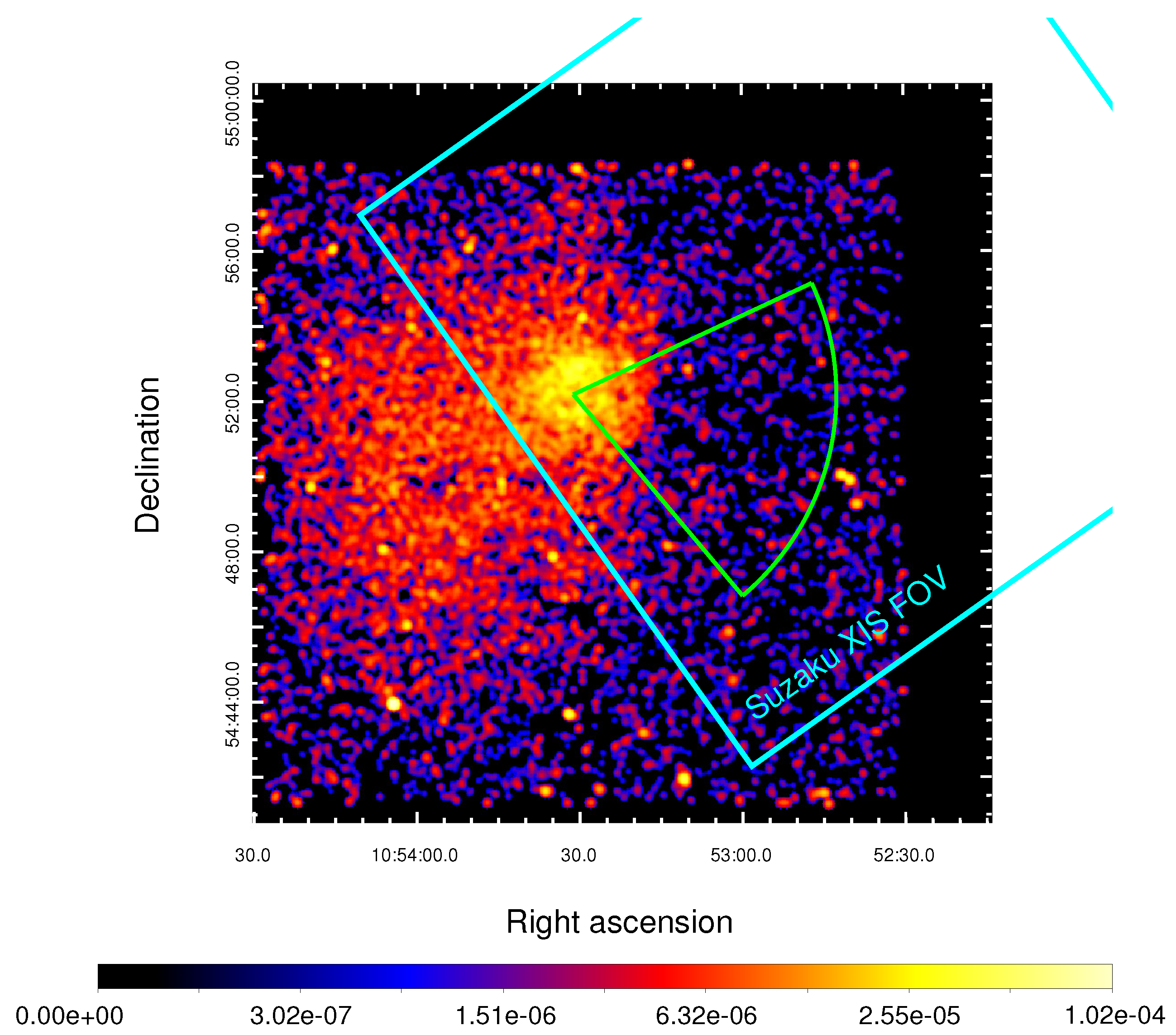
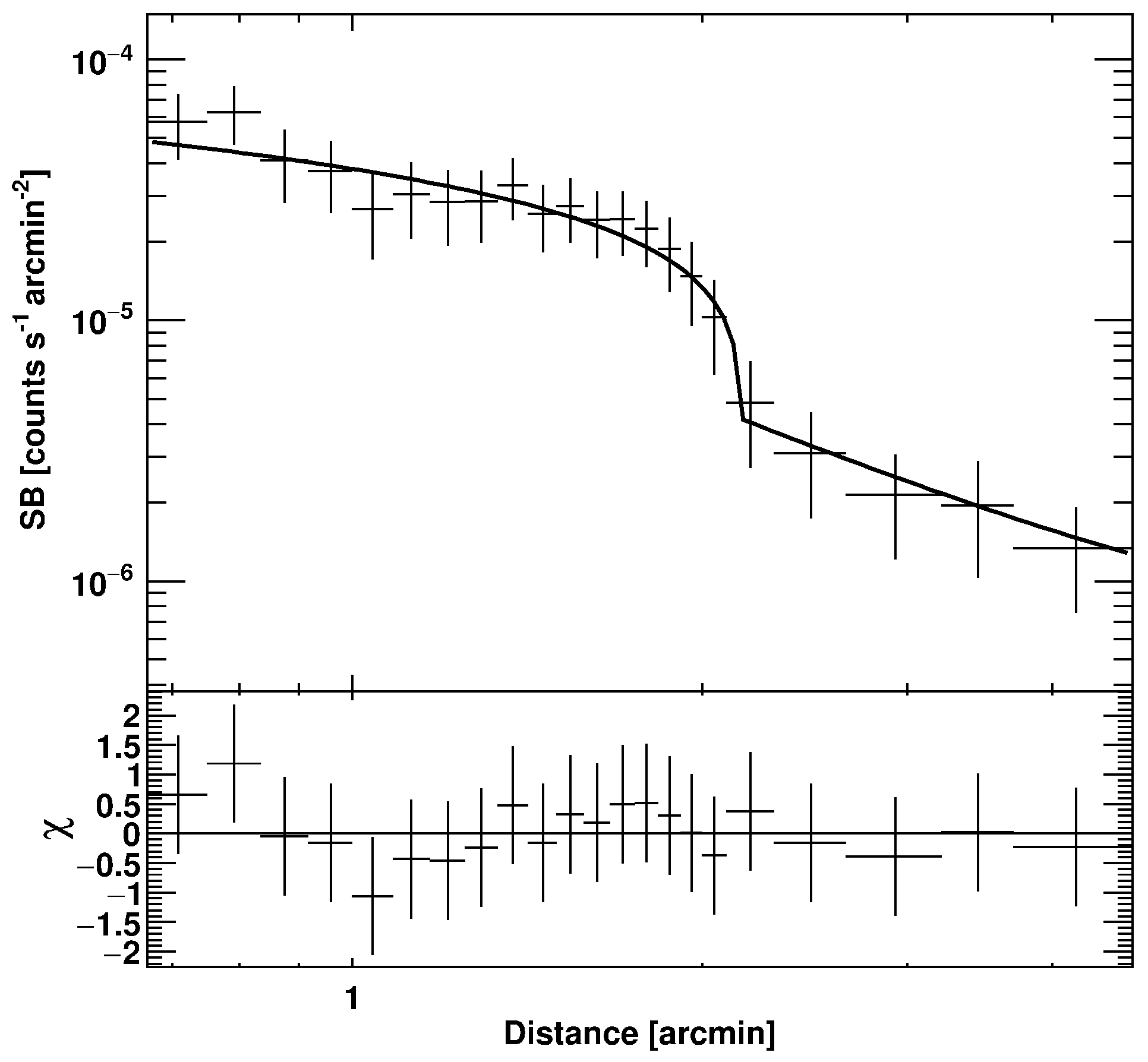
© 2018 by the author. Licensee MDPI, Basel, Switzerland. This article is an open access article distributed under the terms and conditions of the Creative Commons Attribution (CC BY) license (http://creativecommons.org/licenses/by/4.0/).
Share and Cite
Takizawa, M. X-ray and Radio Observations of the Radio Relic Galaxy Clusters 1RXS J0603.3+4214 and RXC J1053.7+5453. Galaxies 2019, 7, 2. https://doi.org/10.3390/galaxies7010002
Takizawa M. X-ray and Radio Observations of the Radio Relic Galaxy Clusters 1RXS J0603.3+4214 and RXC J1053.7+5453. Galaxies. 2019; 7(1):2. https://doi.org/10.3390/galaxies7010002
Chicago/Turabian StyleTakizawa, Motokazu. 2019. "X-ray and Radio Observations of the Radio Relic Galaxy Clusters 1RXS J0603.3+4214 and RXC J1053.7+5453" Galaxies 7, no. 1: 2. https://doi.org/10.3390/galaxies7010002
APA StyleTakizawa, M. (2019). X-ray and Radio Observations of the Radio Relic Galaxy Clusters 1RXS J0603.3+4214 and RXC J1053.7+5453. Galaxies, 7(1), 2. https://doi.org/10.3390/galaxies7010002



